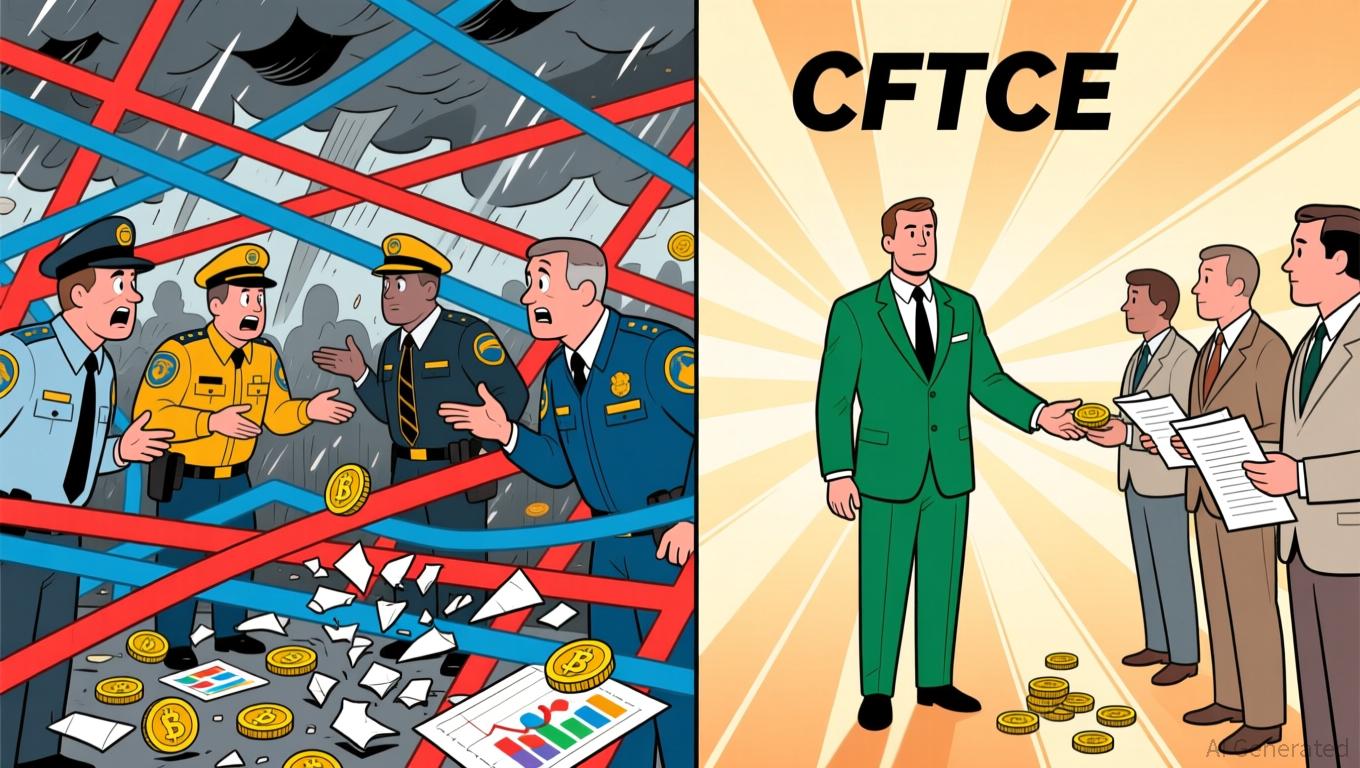The Growing Fascination with Hyperliquid: Is This the Dawn of a New Age in On-Chain Trading?
- Hyperliquid dominates 2025 decentralized derivatives trading with $303B volume, driven by HIP-3 protocol and partnerships with RedStone/21Shares. - Competitive risks emerge as rivals like Aster challenge Hyperliquid's market share through liquidity incentives and 24-hour trading spikes. - Whale activity and leveraged trading risks highlight Hyperliquid's BLP testnet innovations in on-chain lending and risk management solutions. - Institutional adoption accelerates via 21Shares' ETF application, while TVL
Market Trends: Trading Volume, Competition, and Risk Factors
In October 2025, Hyperliquid achieved a milestone with $303 billion in trading volume, surpassing competitors such as Lighter ($272 billion) and
A notable market event occurred in November when a

On-Chain Growth: HIP-3 and the Move Toward Permissionless Markets
The most significant change for Hyperliquid in 2025 is the rollout of HIP-3, which shifts the platform from centralized oversight to a permissionless system for creating markets. With HIP-3, anyone can launch perpetual markets by staking HYPE tokens and setting parameters such as collateral, leverage, and oracle selection. To maintain security, poorly configured markets are subject to slashing, while RedStone’s HyperStone oracle delivers rapid price updates—processing over 103 million data points during testnet phases, according to a
This evolution not only opens up market creation to a wider audience but also makes Hyperliquid more attractive to developers and institutions. By minimizing dependence on centralized permissions, HIP-3 supports the broader DeFi movement toward modularity and user empowerment. The integration of HyperStone further strengthens the platform’s technical backbone, potentially boosting demand for RedStone’s
Institutional Momentum and Regulatory Developments
Interest from institutions is on the rise, illustrated by 21Shares’ application on October 29 for a Hyperliquid ETF, to be managed by
Yet, obstacles remain. Weekly trading fees saw a steep decline in October, falling from $34.86 million to $11.84 million, indicating increased caution among traders during uncertain times, as noted in a
Risks and Future Outlook
Despite Hyperliquid’s strong progress, several risks persist. Heavy reliance on HYPE token staking could make the platform vulnerable to liquidity disruptions if token values swing sharply. The effectiveness of HIP-3 also depends on active participation from market creators and the dependability of oracles like HyperStone. Additionally, as products like the 21Shares ETF gain attention, regulatory scrutiny of decentralized derivatives could become a significant hurdle.
Conclusion: Entering a New Phase?
The advancements made by Hyperliquid in 2025 point to a more mature ecosystem that is bridging the gap between traditional finance and decentralized platforms. By merging high trading volumes, robust infrastructure, and open innovation, Hyperliquid is reshaping the landscape of on-chain finance. However, its future success will hinge on its ability to manage volatility, uphold security, and meet the rising demand for decentralized financial solutions. For investors, Hyperliquid stands as both a promising opportunity and a reflection of the changing dynamics within the crypto sector.
Disclaimer: The content of this article solely reflects the author's opinion and does not represent the platform in any capacity. This article is not intended to serve as a reference for making investment decisions.
You may also like
Bipartisan Legislation Assigns Crypto Regulation to CFTC to Clarify Oversight Uncertainty
- U.S. lawmakers propose shifting crypto regulation from SEC to CFTC via a bipartisan bill, reclassifying most digital assets as commodities. - The draft aims to resolve regulatory ambiguity stifling innovation, building on stalled House CLARITY Act efforts during the 38-day government shutdown. - Market optimism surged as shutdown relief pushed Bitcoin above $105k, with ETF outflows persisting amid anticipation of clearer CFTC-led oversight. - Critics warn of CFTC resource constraints, while proponents hi

Solana News Update: DevvStream Invests in SOL Despite $11.8M Deficit, Shows Strong Confidence in Sustainable Blockchain Prospects
- DevvStream Corp. (DEVS) disclosed holding 12,185 SOL and 22.229 BTC, staking SOL for 6.29% annualized yield amid a $11.8M fiscal 2025 loss. - The company launched a digital asset treasury via BitGo/FRNT Financial, securing $10M liquidity from a $300M convertible note facility. - Plans include a 2026 tokenization platform for carbon credits and Solana staking, aligning with its de-SPAC/Nasdaq listing strategy. - Despite crypto market outflows, DevvStream's staked SOL attracted inflows, contrasting broader
ALGO Falls by 2.28% Over 24 Hours as Short- and Long-Term Performance Shows Mixed Results
- ALGO dropped 2.28% in 24 hours to $0.1844, contrasting with 17.29% weekly and 4% monthly gains but a 44.84% annual decline. - Traders monitor ALGO's resilience amid macroeconomic shifts, though long-term bearish trends highlight structural challenges. - Key support at $0.18 could trigger bullish momentum if held, while breakdown risks further declines toward $0.15. - A backtest analyzing 15% single-day spikes aims to assess ALGO's potential for sustained gains or pullbacks post-rallies.
BCH Gains 1.24% Following Banco de Chile’s Announcement of Bylaw Changes
- Banco de Chile (BCH) announced bylaw amendments on Nov 10, 2025, to strengthen corporate governance and align with regulatory standards. - The announcement coincided with a 10.81% 7-day stock surge, contrasting with a 2.07% monthly decline but supporting a 20.6% annual gain. - Investors viewed governance reforms positively, as such changes often signal improved transparency and accountability in regulated markets.